Vad är det största problemet med litiumbatterier?
Litiumjonbatterier driver vår moderna värld, Från smartphones till elektriska fordon och lagringssystem för hemmetergi. Men som med alla transformativa tekniker, De är inte utan deras utmaningar. Det är viktigt att ha en ärlig konversation om dessa frågor, Så vad är egentligen det största problemet med litiumbatterier?
Det finns inte en enda "största" problem, Men en uppsättning viktiga utmaningar branschen arbetar aktivt för att lösa. Dessa inkluderar Höga kostnader och miljö/etiska problem med gruvdråer som litium och kobolt, de ändlig livslängd och eventuell nedbrytning av alla batterier, säkerhetsrisker Om batterier skadas eller felaktigt hanteras, och det utvecklande fältet för återvinning. Den goda nyheten är att moderna batteriteknologier, särskilt staplingsbara litiumbatterier Använda LFP -kemi, är konstruerade för att specifikt hantera många av dessa problem.
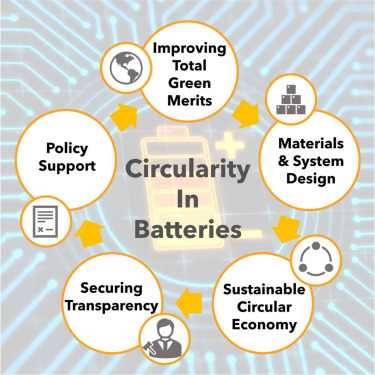
På Gycx Solar, Vi tror att förståelse av dessa utmaningar är nyckeln till att uppskatta konstruktionen och säkerheten inbyggd i de högkvalitativa energilagringslösningarna vi tillhandahåller. Låt oss utforska dessa ämnen och titta på vad framtiden innehar.
Är litiumbatterier som fasas ut?
Med nyheter om nya batteri genombrott som verkar dyka upp varje månad, En vanlig fråga är om dagens litiumjonbatterier är på väg att bli föråldrad. Om du är orolig för att investera i en teknik som snart kan fasas ut?
Nej, Litiumjonbatterier fasas inte ut när som helst snart. Faktiskt, De är mer dominerande än någonsin och kommer att förbli den ledande tekniken för elfordon, konsumentelektronik, och energilagring under överskådlig framtid. Den globala investeringen i litiumjonens leveranskedja, från gruvdrift till tillverkning, är massiv. Medan spännande nya alternativ är i horisonten, Litiumjon-tekniken förbättras också kontinuerligt, Bli billigare, säkrare, och längre varv varje år.
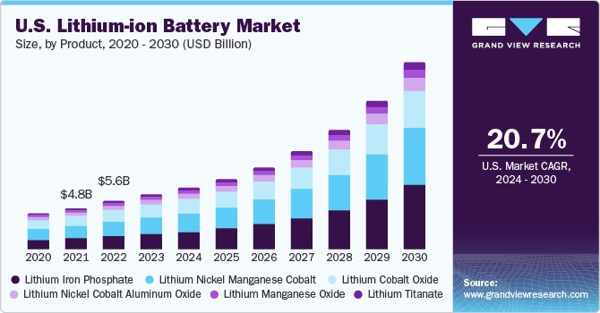
Dyk djupare: Den regerande kungen av energilagring
Här är varför litiumjon-teknik inte går någonstans på ett tag:
- Massiv global infrastruktur: Biljoner dollar har investerats över hela världen i att bygga "Gigafactories" och förfina leveranskedjorna för litiumjonbatterier. Denna enorma skala skapar effektivitet och ett momentum att ny teknik kommer att ta många år att matcha.
- Kontinuerlig förbättring: Litiumjon är inte en statisk teknik. Forskare gör ständigt stegvisa förbättringar. Till exempel, de LFP1. (Litiumjärnfosfat) kemi, som vi använder i vår staplingsbara litiumbatterier, har blivit ett dominerande val för stationär lagring eftersom det är säkrare, långvarig, och använder inte kobolt, Att ta itu med ett av de viktigaste "problemen" av äldre litiumkemiker.
- Bevisad och bankbar: För storskaliga projekt, både investerare och husägare behöver teknik som är bevisad, pålitlig, och förutsägbar. Litiumjon har årtionden av data bakom sig, gör det till en "bankbar" Teknik som litar på kritiska tillämpningar.
- Vägen till ny teknik: Nya batteritekniker kommer att dyka upp, Men deras väg till massmarknadens adoption är lång. De kommer att behöva bevisa att de kan tillverkas i skala, är säkra, pålitlig, och kan tävla på kostnad. För tillfället, och under många år framöver, Litiumjon är den etablerade och pålitliga standarden.
Är det okej att stapla batterier ovanpå varandra?
Detta är en kritisk säkerhetsfråga som dyker upp när människor planerar en installation i ett tätt utrymme. Kan du bara placera tunga batterimoduler direkt ovanpå varandra?
Det är bara okej att stapla batterier ovanpå varandra om de specifikt är konstruerade och certifierade av tillverkaren för direkt stapling. Dessa enheter kommer att ha förstärkt, sammankopplade höljen för att säkerställa stabilitet. För de flesta professionella system, inklusive staplingsbara litiumbatterier Vi använder, "stapel" betyder att installera modulerna på enskilda hyllor eller skenor i en robust utrustningsställ eller skåp. Godtyckligt staplar batterier är extremt farligt.
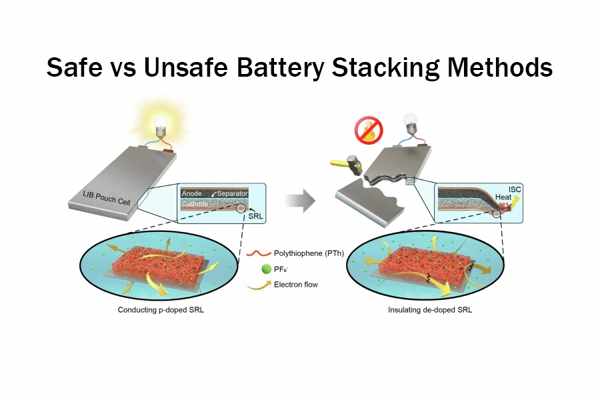
Dyk djupare: Konstruktion av en säker stack
Säkerhet under lagring och installation är inte förhandlingsbar. Här är därför att använda ett ordentligt rack eller konstruerat kapsling är den professionella standarden:
- Mekanisk stabilitet: Ett utrustningsställ är bultat ihop och förankras ofta på golvet eller väggen. Det ger en stall, seismiskt säker struktur som inte kommer att tippa eller växla. Detta är avgörande för tunga batterimoduler.
- Tyngdstöd: Varje modul i ett rack stöds av sin egen uppsättning skenor eller en hylla. Detta betyder att höljet på det nedre batteriet inte bär det fulla, krossa vikten av alla andra batterier ovanför.
- Termisk ledning: Stapling av batterier kräver att hanteras värmen de genererar. Ett rack säkerställer att det är avsiktligt, konsekvent avstånd mellan varje modul, möjliggör korrekt luftflöde och kylning. Detta är avgörande för både säkerhets- och batterilivslängd, särskilt i ett hett klimat som vi har i USA.
- Elektrisk säkerhet: Ett rack hjälper till att organisera ledningar och håller terminaler skyddade, förhindrar oavsiktliga kortslutningar.
- När staplar direkt? Vissa tillverkare designar mindre, modulbatterier med starka, sammankopplade höljen som är avsedda för direkt stapling (ofta begränsat till ett specifikt antal enheter). Du måste alltid Följ tillverkarens installationshandbok till brevet. Om det inte uttryckligen säger kan du stapla dem direkt, Du måste använda ett rack eller en hyllsystem.
Gycx solhistoria: "På Gycx Solar, Varje multimodulsystem som vi installerar använder ett professionellt rack eller skåp. Det är grunden för en säker och pålitlig installation. Vi ser racket inte som ett tillbehör, men som en väsentlig del av själva batterisystemet."
Vad är det nya alternativet till litiumbatterier?
Med utmaningarna kring litium, Forskare och företag arbetar hårt med "Vad är nästa." Vilka är de mest lovande nya alternativen i horisonten?
Från och med 2025, Det mest kommersiellt livskraftiga nya alternativet till litiumjonbatterier, speciellt för stationär energilagring (som för ett hem eller ett företag), är natriumjon (N-ion) batteri. Denna teknik använder natrium, Ett otroligt rikligt och billigt material (Tänk bordsalt), istället för litium. Andra framtida tekniker som solid-state-batterier har också stort löfte men är i allmänhet längre från massmarknadens tillgänglighet.
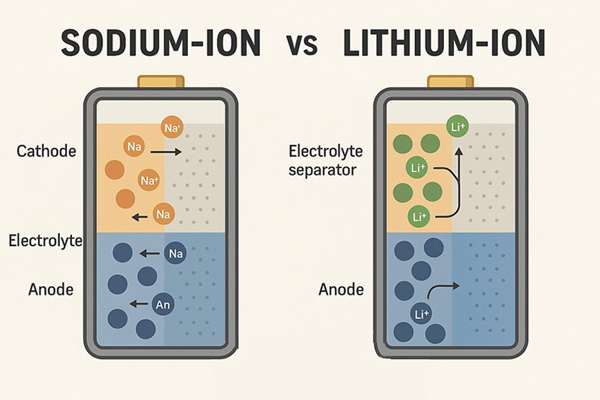
Dyk djupare: En glimt av nästa generations lagring
Låt oss titta på de bästa utmanarna:
- Natriumjon (N-ion) Batterier:
- Fördelar: Materialen är extremt rikliga och billiga (natrium är över 1,000 gånger vanligare i jordens skorpa än litium). De har en utmärkt säkerhetsprofil och presterar mycket bra i kalla temperaturer. De kan ofta tillverkas på samma utrustning som litiumjonbatterier, underlätta övergången.
- Nackdelar: Deras huvudsakliga nackdel är för närvarande lägre energitäthet, vilket innebär att de är tyngre och bulkigare än litiumjon för samma mängd lagrad energi.
- Bästa passform: Perfekt för stationära lagringsapplikationer där vikt och storlek är mindre kritiska, som för förvaring av hemkraft eller storskaligt nätstöd. Detta gör dem till en direkt framtida konkurrent till LFP.
- Fasta tillståndsbatterier:
- Fördelar: Den heliga graal" av batteriforskning. Genom att använda en fast elektrolyt istället för en flytande, De har potential att vara mycket säkrare (Ingen brandfarlig vätska) och ha en mycket högre energitäthet.
- Nackdelar: De står fortfarande inför betydande tillverkningsutmaningar och är mycket dyra. Medan vissa småskaliga applikationer finns, De är ännu inte kommersiellt hållbara för storskalig energilagring i 2025.
- Grafenbatterier (se nästa avsnitt)...
Medan dessa framtida tekniker är spännande, för dagens behov, LFP-litiumjon av hög kvalitet förblir den mest mogna, pålitlig, och kostnadseffektivt val för system som vårt staplingsbara litiumbatterier.
Är ett grafenbatteri bättre än litium?
Du har förmodligen sett spännande rubriker om "grafenbatterier" som kan ladda på några sekunder. Är detta en ny teknik som är platt bättre än litium? Grafenens roll i batterier missförstås ofta.
För närvarande, ett riktigt "grafenbatteri" (en gjord helt av grafen) finns inte som en kommersiell produkt. I stället, grafen används som en kraftfull förbättring eller tillsatsmedel till befintliga litiumjonbatterier. Så, Det är inte "grafen vs. litium," utan snarare "grafen förbättring litium." Ett grafenförstärkt litiumbatteri kan vara betydligt bättre i vissa aspekter, som laddningshastighet och livslängd.
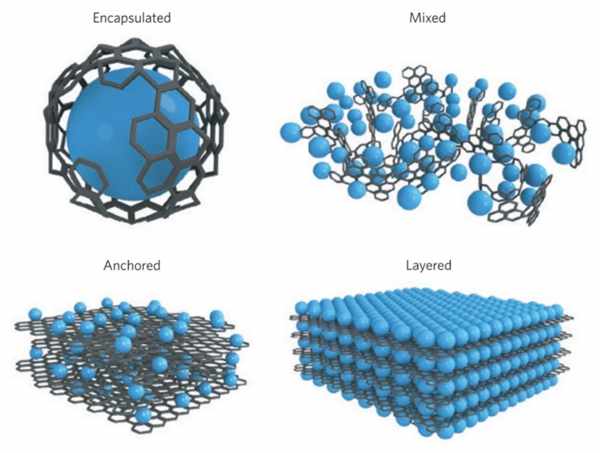
Dyk djupare: Grafen som en super-additiv
Så här används grafen faktiskt:
- Vad är grafen? Det är ett en-atomt tjockt ark kolatomer arrangerade i ett honungskakagitter. Det är oerhört starkt, lättvikt, och en exceptionellt bra ledare av både värme och el.
- Hur det förbättrar litiumbatterier:
- Snabbare laddning: Grafen kan blandas i batteriets elektroder (anod eller katod) för att skapa ett slags "Superhighway" för elektroner. Detta ökar dramatiskt konduktivitet, så att batteriet laddas mycket snabbare utan farlig värmeuppbyggnad.
- Längre livslängd: Elektrodernas fysiska struktur kan svälla, krympa, och bryt ned över många laddningscykler. Grafens styrka och flexibilitet kan hjälpa till att hålla elektrodmaterialet ihop, vilket leder till en längre cykelliv.
- Bättre termisk hantering: Eftersom grafen är utmärkt att utföra värme, det kan hjälpa till att sprida värmen jämnare i batterifallen, förhindra hotspots och förbättra säkerhet och livslängd.
- Verkligheten i 2025: Medan tekniken är bevisad, Grafenförstärkta batterier är fortfarande premiumprodukter och ännu inte standarden i branschen. När du ser en produkt som marknadsförs som ett "grafenbatteri" i dag (ofta i kraftbanker eller specifika högpresterande applikationer), Det är nästan säkert ett litiumjonbatteri som använder grafen som ett viktigt tillsatsmedel. Ett batteri som endast använder grafen för att lagra energi finns fortfarande i forsknings- och utvecklingsfasen.
På Gycx Solar, Vi övervakar alltid dessa tekniska framsteg. Vårt engagemang är att ge våra kunder de mest beprövade, säker, och tillförlitlig teknik tillgänglig idag, som är högkvalitativ LFP i vår stapelbart batteri system, Samtidigt som du håller ett öga på den spännande utvecklingen som kommer att driva vår framtid.
Medan litiumbatterier står inför giltiga utmaningar när det gäller kostnader, sourcing, och säkerhet, Branschen är aggressivt att hantera dem, särskilt med övergången mot säkrare, koboltfri LFP-kemi. För tillfället, Litiumjon fasas inte ut utan förbättras kontinuerligt. Framtiden lovar spännande alternativ som natriumjon, Men för dagens behov, en professionellt installerad, stapelbart litiumbatteri Systemet förblir den bästa lösningen för pålitlig, långvarig energilagring.
Om du har frågor om de beprövade och säkra batteriteknologierna vi använder på GYCX Solar, eller vill förstå hur ett lagringssystem kan gynna dig, Vårt expertteam är här för att hjälpa till. Kontakta oss för ett professionellt samråd!
Att förstå begreppet LFP hjälper dig att bättre jämföra och förstå batterirelaterade datakoncept. ↩
